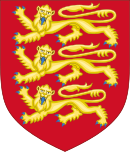This article has multiple issues. Please help improve it or discuss these issues on the talk page. (Learn how and when to remove these messages)
|
East of England | |
|---|---|
From top, left to right: Norfolk Broads; Suffolk Coast; Hatfield House; Peterborough; Leighton Buzzard; Cambridge; Huntingdon; Colchester | |
 East of England region shown within England | |
| Coordinates: 52°14′N 0°25′E / 52.24°N 0.41°E | |
| Sovereign state | United Kingdom |
| Country | England |
| GO established | 1994 |
| RDA established | 1998 |
| GO abolished | 2011 |
| RDA abolished | 31 March 2012 |
| Subdivisions | |
| Government | |
| • Type | Local authority leaders' board |
| • Body | East of England Local Government Association |
| • MPs | 58 MPs (of 650) |
| Area | |
• Total | 7,563 sq mi (19,587 km2) |
| • Land | 7,381 sq mi (19,116 km2) |
| • Rank | 2nd |
| Population (2022)[3] | |
• Total | 6,398,497 |
| • Rank | 4th |
| • Density | 870/sq mi (335/km2) |
| Ethnicity (2021) | |
| • Ethnic groups | |
| Religion (2021) | |
| • Religion | List
|
| Time zone | UTC+0 (GMT) |
| • Summer (DST) | UTC+1 (BST) |
| ITL code | TLH |
| GSS code | E12000006 |
| This article is part of a series within the Politics of the United Kingdom on the |
 |
|---|
The East of England is one of the nine official regions of England in the United Kingdom. This region was created in 1994 and was adopted for statistics purposes from 1999. It includes the ceremonial counties of Bedfordshire, Cambridgeshire, Essex, Hertfordshire, Norfolk and Suffolk. Essex has the highest population in the region.[5]
The population of the East of England region in 2022 was 6,398,497.[3] Bedford, Luton, Basildon, Peterborough, Southend-on-Sea, Norwich, Ipswich, Colchester, Chelmsford and Cambridge are the region's most populous settlements.[6] According to Census 2021, Peterborough is the largest city in the East of England at 215,000. The southern part of the region lies in the London commuter belt.
- ^ "Home - EELGA". East of England Local Government Association. Retrieved 10 August 2024.
- ^ "Standard Area Measurements (Latest) for Administrative Areas in the United Kingdom". Open Geography Portal. Office for National Statistics. 24 April 2024. Retrieved 6 May 2024.
- ^ a b "Mid-Year Population Estimates, UK, June 2022". Office for National Statistics. 26 March 2024. Retrieved 3 May 2024.
- ^ a b UK Census (2021). "2021 Census Area Profile – East of England Region (E12000006)". Nomis. Office for National Statistics. Retrieved 14 August 2023.
- ^ "UK: county population". Statista. Retrieved 5 August 2020.
- ^ "East of England (United Kingdom): Counties and Unitary Districts & Settlements - Population Statistics, Charts and Map". www.citypopulation.de. Retrieved 5 August 2020.







